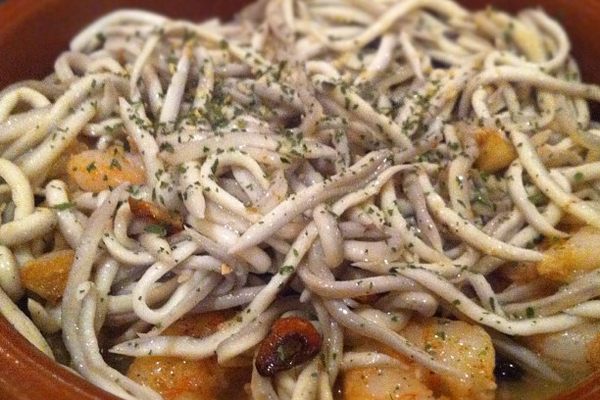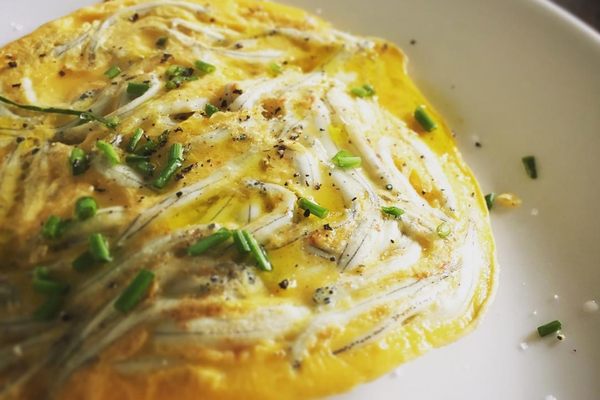Meats & Animal Products
Palolo
To catch these coral-dwelling, caviar-flavored sea worms, you must wade into their annual mating ritual.
One night every October, Samoan families wade into the ocean with nets and flashlights. It’s seven days after the full moon and, right on schedule, the milky mix of worms in the shallow water signals it’s palolo harvesting time. Men, women, and children dip their nets or bare hands into the water and come up with long, spaghetti-like strands. Some might slurp one into their mouths, savoring the flavor that many liken to roe.
The following day, Samoans will throw feasts to celebrate their bounty, frying the palolo with eggs, baking them into bread with coconut milk and onions, or simply sprinkling them on toast. The worm, which can be reddish-brown (male) or bluish-green (female), is a delicacy in the South Pacific: The coral-dwelling critters have the salty, fishy flavor of seaweed or caviar coupled with the stringy texture of noodles.
If you ever have the chance to dig into a palolo dish, you might notice that the worm doesn’t seem to have a head. That’s because its head is still alive, safe and sound, back in its coral home. The palolo has the rare ability to bisect itself, detaching its lower half each mating season so it can float to the surface and release eggs or sperm. It’s these “tails,” that nocturnal hunters catch and fry up.
While its posterior is being devoured, the rest of the palolo lives in blissful ignorance beneath the ocean’s surface. In fact, it’s already regenerating a new rear that will be ready by the end of the week.
Written By
 Sam OBrien
Sam OBrien














